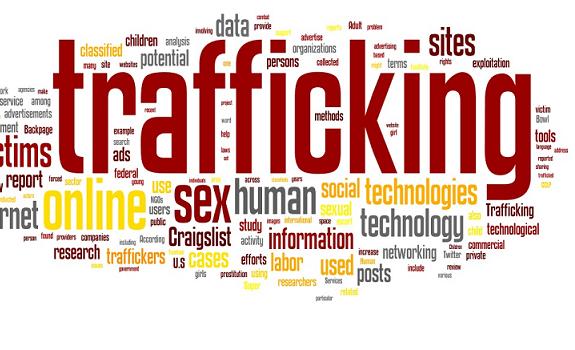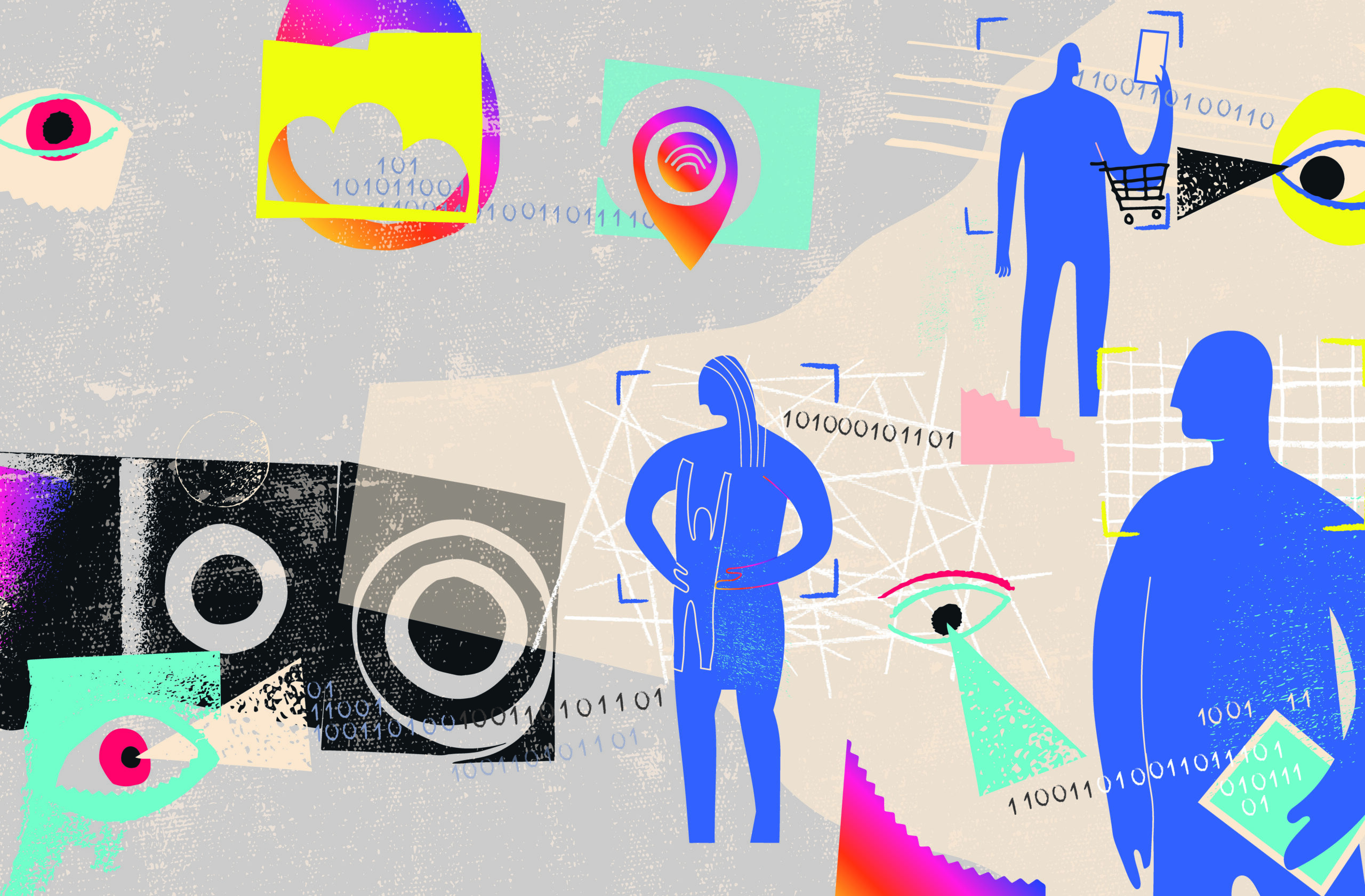by Bryan Silver
For many, the images conjured up of child sex trafficking involve a foreign backdrop—one that focuses on some vaguely familiar, overcrowded city with the all-too-common characteristics of poverty, squalor, and rampant crime. Possibly it’s Rio de Janeiro or Venezuela’s capital, Caracas; maybe one of the poorer sections of Guangdong Province in China. It could even be some Slavic country where a socioeconomic stagnation still exists as much of the population still struggles almost 30 years after the collapse of communism.
The one place most Americans never picture child sex trafficking occurring is within the United States itself—yet, it’s between our borders where thousands are sold into sex trafficking every year.
According to the U.S. Department of Homeland Security—the federal agency responsible for investigating human trafficking, arresting traffickers and protecting victims—commercial sexual exploitation is all around us. Considered to be modern-day slavery in America, it’s a grave violation of basic human rights and it’s not going anywhere unless we do something about it.
While “modern slavery” includes those who are forced into prostitution, it also references individuals forced into working in agriculture or construction, children made to work in sweatshops and even young girls made to marry older men. The website www.antislavery.org currently estimates that as many as 40.3 million people around the world are enslaved against their will, while 4.8 million of those are specifically forced into sexual exploitation. In the U.S., child sex trafficking numbers can vary wildly from 17,000 children to 100,000 children each year (more on this in The Numbers Are Elusive… sidebar)—mainly because there is so little statistical data that has been gathered. According to Monique Villa, the CEO of the Thomson Reuters Foundation, which works to combat human trafficking, the issue lies in that many of the cases go unreported. “The problem with human trafficking is that of course the victims are silenced,” Villa said. “We don’t have good data about it. You don’t know how many slaves there are around the world.”
How Does this Happen and What are we Doing About it?
Usually, sex traffickers use violence, threats, lies and other forms of coercion to their victims to engage in commercial sex acts against their will. Especially in the case of teens and children, sex traffickers will specifically target vulnerable populations such as runaways and victims of domestic violence or social discrimination. Yet, according to U.S. law, a minor only needs to be subjected to commercial sex to be considered a victim of sex trafficking—regardless of their situation, compliance, or whether or not the trafficker used force, fraud, or coercion.
The situation has become so dire, that U.S. lawmakers recently passed a new law by the name of FOSTA-SESTA—which refers to the House bill “Fight Online Sex Trafficking Act” and its sibling Senate bill “Stop Enabling Sex Traffickers Act.” While initially proposed separately, they were recrafted to include much of the same language—finally being signed into law by President Trump in April 2018 after receiving overwhelming support by Congress. The reason for the rather speedy adoption of FOSTA-SESTA is that the Internet was seen as a potential catalyst if not accelerant for spreading the sex trade beyond seedy street corners and into the homes of many Americans.
Don’t interpret this as a one-way conduit, though. While some Americans are begrudgingly being pulled into this oversexualized cyberworld from constant exposure, others are pushing hard to best utilize ever-changing technologies in a practice that once required a fair bit of time, knowledge and luck. Now, residents and visitors alike to this dark world only need an Internet access device and a few minutes each day. As an example, the FBI currently estimates that—at virtually any moment of any day—there are 750,000 child predators online.
While prostitution and slavery have been around possibly as long as human civilization, there’s no denying that the digital world has exponentially elevated its availability and its appeal to some.
Yet it’s this availability of anything that leads to the rejection of nothing. What’s worse is that our current culture does little to discourage such consumption. Many would argue that American culture still focuses on the needs of men above those of women and children—thus, they are the ones who are most often exploited.
What Kind of a Person Buys Children for Sex?
As with the most basic of transactions, to successfully sell your commodity you must have buyers who are willing to pay the price. It then stands to reason that—in order for such condemnable commerce to exist—there needs to be a consumer. But who are these individuals and why do they do what they do? For many, the answers may be surprising.
According to one survivor, they come from all walks of life. Many are otherwise upstanding members of their community. They have prosperous lives. The Internet has allowed child sex trafficking to emerge from the rubble of decaying inner cityscapes and disrupt the false sense of security which the suburbs so often provides its respectable residents.
How is it that such a depraved practice has spread throughout our society? One hard to accept, yet undeniable answer is that the process has simply become easier in recent years. Whether you’re looking at the rise of the Internet, social media, or even the prevalence of hard-to-trace payment methods such as prepaid and disposable credit cards or cryptocurrency like bitcoin, they all have contributed to not only a surfacing of the otherwise seamy side of civilization but actually helped it to thrive.
Another contributor to the explosion in child exploitation is that, until recently, buyers have faced little in the way of risk—specifically here in the U.S. As way of explanation, Department of Justice spokesperson pointed out that the primary objective has been to focus “…our limited resources on apprehending the traffickers, who pose the most imminent threat to the victims.”
As an example, police in Nashville rescued a 12-year-old girl in 2016 who had been held captive in a hotel room located in a relatively wealthy suburb of the city for more than a month. She had been repeatedly sold via a Backpage.com advertisement to men in the area and repeatedly raped. The 36-year-old man allegedly responsible (he still awaits trial) was charged with multiple counts of trafficking, kidnapping and rape—yet, none of the men who paid to sexually abuse the young girl were ever charged.
“That child will have to fight the stigma of what happened to her for the rest of her life,” said Alex Trouteaud, a representative for Demand Abolition, an organization dedicated to reducing demand for commercial sex. “Meanwhile, the buyers will never be held accountable. It’s what we call the culture of impunity.” Many may have heard this term used to describe Third World countries where murder, theft and other crimes go unpunished when perpetrated by the privileged. Yet, recently, cultures of impunity have become more of an American problem. Crimes in the financial and corporate worlds with devastating economic repercussions have evoked little to no repercussions. From Hollywood to the hallowed halls of our higher learning institutions, sexual assault has been ignored or covered up. And incidents of police brutality or unjustified killings go unaccounted for when they occur in minority communities.
But not all buyers escape justice. In July 2017, a 56-year-old tradesman working in the Cleveland area was sentenced to 17.5 years in federal prison for exploiting an underage sex trafficking victim. Initially responding to a Backpage.com ad that professed to be from a “lovely college girl,” Richard Purnell began hiring—through a known pimp—the then 14-year-old girl for sex. In 2016, FBI agents investigating the pimp (who later was sentenced to 14 years in federal prison) followed the trail to Purnell and expanded their investigation to include the otherwise normal owner of his own roofing company.
Between July 2015 and February 2016, federal authorities say Purnell sent 5,854 text messages and placed 204 phone calls to numbers listed in Backpage escort ads. More than 1,000 of those calls and texts were to three young trafficking victims from the Cleveland area, including a girl who was first sold for sex when she was 13. According to Mike Tobin, the Community and Public Affairs Specialist with the U.S. Attorney’s Office in Cleveland, Purnell’s case has the distinction of being the first case ever where the U.S. Attorney’s Office charged a “customer” with sex trafficking—mainly due to the fact that the federal statute allows authorities to charge anyone who solicits a child for sex with the same crime as somebody who recruits or advertises the services.
How Children Fall Victim to Traffickers
According to Thorn—a unique nonprofit founded by celebrity activists Ashton Kutcher and Demi Moore that’s focused on stopping the spread of child sexual abuse—technology is now playing a large role in the recruitment of these children. Building on statements from actual child sex trafficking survivors, the organization issued a report entitled Survivor Insights: The Role of Technology in Domestic Minor Sex Trafficking in 2018, which offers some very telling data. Specifically, the report states that how traffickers approach, groom and recruit potential victims is rapidly changing with the adoption of digital technologies and social media platforms.
Prior to 2015, Thorn contributors claimed that they met their trafficker first in person 84 percent of the time. Perhaps in a public place such as a shopping area or a chance meeting on the street. After 2015, the approach took a noticeable change, with 55 percent of first-time meetings occurring via texting, a website or social app. Similarly, 85 percent of those who were recruited before 2015 said that the trafficker spent time with them in person, building a relationship. After 2015, survivors said that the relationship was fostered in person only 58 percent of the time, with the remaining interactions occurring either through digital means (63 percent) or simply phone calls (25 percent).
The most striking takeaway from the information collected is that, previously, recruitment occurred through a singular dominant method—face-to-face meetings—where, now, multiple methods of interaction and often no in-person contact are becoming the norm. This is disturbing because it severely curtails the ability of parents or authorities to monitor the interactions of children and traffickers respectively. While an unknown adult suddenly spending time with a withdrawn or maladjusted child is an immediate red flag for responsible adults in any community, there now might be no visible signs of interaction to a casual observer—only those delving deeply into a child’s digital footprint might traces of a trafficker be revealed.
Of course, leaving a digital trail also improves the chance for apprehension and prosecution in many ways. In the case of Richard Purnell, it was a log of text messages and phone calls that allowed federal authorities to piece together a timeline of the trafficker’s interactions with his victims, and it was the sheer volume of transcripts that painted the picture of a masterful manipulator—an image that might have been blurred and incomplete in a courtroom if it was left only to the testimony and personal recountings of young traumatized victims.
Child sex trafficking is a disturbing topic, but it’s one that must be confronted by our society as a whole if we are to change the paradigm. Contrary to popular belief, it’s not something that only happens in far away alleys where impoverished children beg for food and lecherous men take advantage of the fact that everything has a price. While Hollywood would have you think differently, the majority of child sex trafficking isn’t perpetrated by sneering strangers who lurk in the shadows and doesn’t usually involve kidnapping or imprisonment. Oftentimes it occurs to any given child randomly, or worse, its occurrence is simply a matter of misplaced trust.
Traffickers often don’t have to try very hard at all, they simply must trick their victims into thinking they are a friend, a protector and a provider. For a troubled child who is scared, it does not take much to submit to something so terrible, as long as there’s the promise that someday it will all lead to something better.
This is why we should never call these individuals victims. While they have traveled down the darkest of tunnels and waded through the dankest of filth, they have made it through to the other side. Regardless of what they experienced, they push onward with the hopefulness that things will look better in the light of a new day. They have emerged as survivors.








Leave A Comment